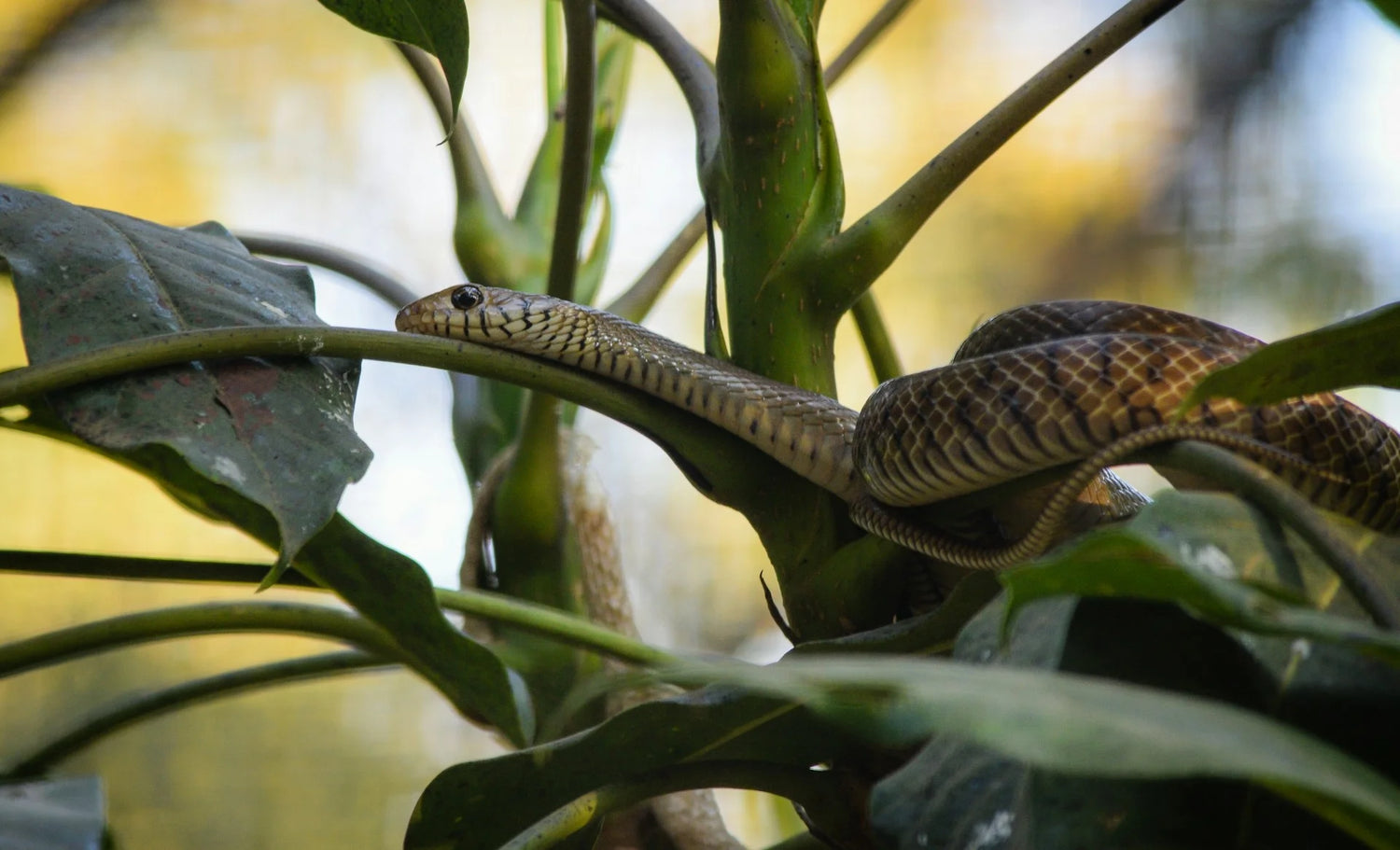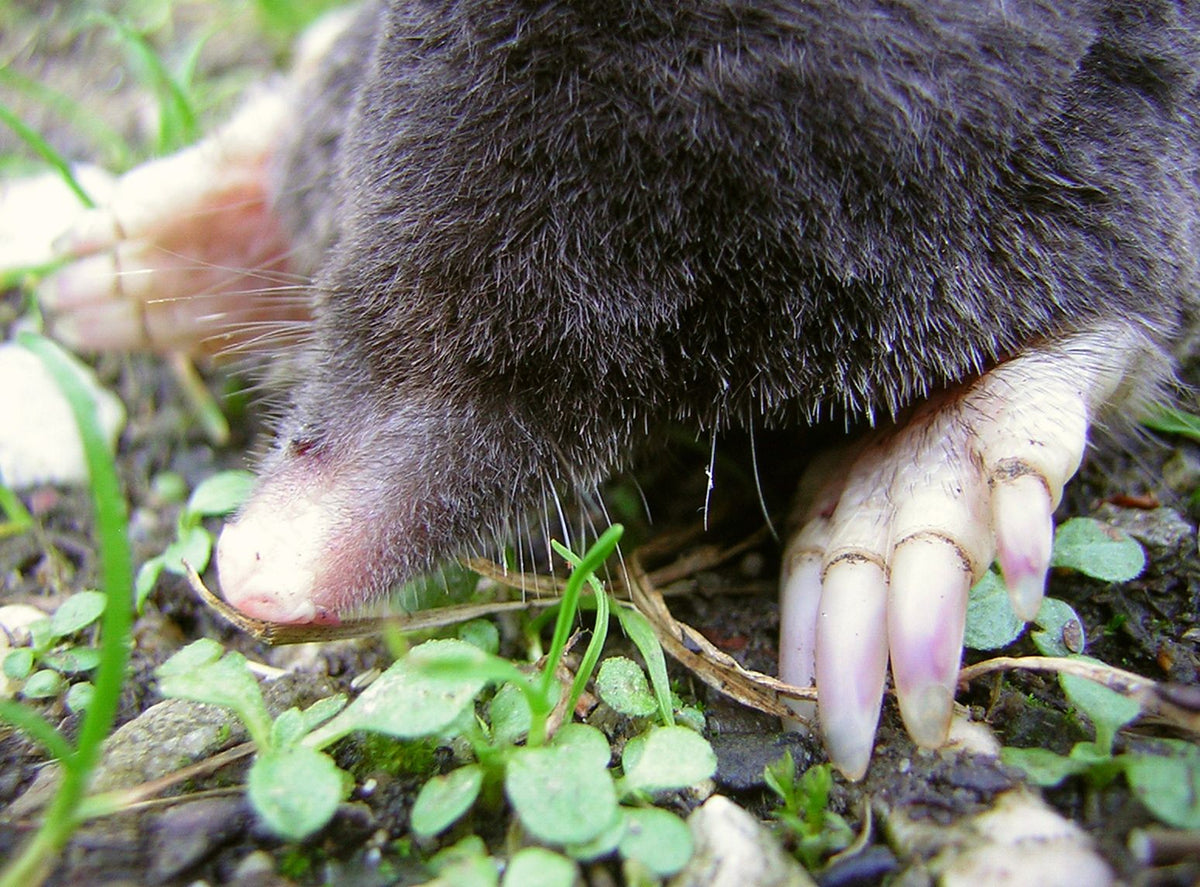Imagine this: You’re enjoying a peaceful afternoon in your garden, the sun is shining, the flowers are blooming, and then, out of the corner of your eye, you spot something slithering through the grass. Your heart skips a beat—could it be a snake?
For many, this scenario is more than just a fleeting thought; it's a genuine concern, especially if you live in areas prone to these stealthy visitors. But what if there was a way to enjoy your garden without the fear of encountering these unwelcome guests?
At Messinas, we believe your outdoor space should be a sanctuary, free from the worry of slithering intruders. That’s why we’ve put together this guide on snake repellent plants—natural, beautiful, and effective solutions to keep snakes at bay.
Whether you're looking to create a safe zone around your home or enhance the aesthetic of your garden, these plants offer a dual benefit: beauty and protection. Learn more about how you can safeguard your garden with snake repellent plants and explore our reptile repellent products and other essential gardening solutions at Messinas.
The Importance of Snake Repellent Plants

Snake repellent plants are an effective and environmentally friendly way to deter snakes from your yard. By strategically planting these natural repellents around your property, you can reduce the likelihood of snake encounters without the need for harmful chemicals. These plants work by emitting strong scents or creating uncomfortable textures that snakes prefer to avoid.
Incorporating snake repelling plants into your garden is a smart approach to integrated pest management. Whether you’re dealing with non-venomous species or want to protect your family from the few venomous snakes that might be in your area, these plants offer a safe and natural solution.
Top 5 Snake Repellent Plants for Your Garden
Here are five plants that repel snakes effectively, ensuring your yard remains a snake-free zone:
Lavender

Lavender is a popular snake repellent plant due to its strong, fragrant scent that snakes find offensive. Planting lavender along garden paths or near entry points to your home can create a natural barrier that deters snakes from entering these areas. Lavender is also easy to maintain, making it a practical choice for any garden.
Marigolds

Marigolds are not only vibrant and beautiful but also serve as excellent snake repelling plants. The strong odor of marigolds, coupled with their deep root system, makes them effective at deterring snakes and other pests. Plant them in sunny spots around your yard to maximize their effectiveness.
Rosemary

Rosemary is another aromatic herb that acts as a natural snake repellent plant. Its strong scent is unappealing to snakes, and it can be planted around your garden or near doorways to keep these unwanted guests at bay. Rosemary also has the added benefit of being a culinary herb, making it a versatile addition to your garden.
Onion and Garlic

Onion and garlic are well-known for their pungent smells, which snakes find highly unpleasant. These plants that repel snakes can be planted in your garden to create a natural deterrent. Alternatively, you can chop up these plants and sprinkle them around your yard for added protection.

Lemongrass

Lemongrass is a powerful snake repelling plant due to its high citronella content. The strong citrus scent of lemongrass keeps snakes and other pests at a distance. It thrives in warm, sunny environments, making it an ideal choice for gardens in hotter climates.
Best Snake Repellent Plants by Region

Different parts of the United States have varying climates, which affects the types of snake repellent plants that can thrive. Here’s a guide to choosing plants that repel snakes based on your location:
Southeastern U.S. (Zones 8-11)
In the humid and warm Southeastern states, lemongrass, marigolds, and mugwort are excellent choices. These plants repelling snakes thrive in the heat and can withstand the region’s heavy rains. Lavender is also a great option if you plant it in well-drained soil to avoid root rot. For comprehensive yard care, consider using lawn food to keep your plants healthy and robust.
Southwestern U.S. (Zones 9-11)
The arid climate of the Southwest is perfect for rosemary, cactus, and sage as snake repelling plants. These plants are drought-tolerant and can handle the intense sun and dry conditions typical of this region. Basil is another plant that thrives in this climate and can help keep snakes away.
Northeastern U.S. (Zones 3-7)
In the cooler and sometimes harsh climates of the Northeast, lavender, onions, and garlic are hardy choices. These plants that repel snakes can endure colder temperatures and still provide effective protection against snakes. Holly is also a good choice for this region, providing year-round deterrence with its prickly leaves.
Midwest U.S. (Zones 4-8)
For the Midwest, where summers can be hot and winters cold, marigolds, garlic, and pink agapanthus are suitable options. These snake repelling plants are adaptable to varying weather conditions, making them reliable choices for this region.
Western U.S. (Zones 6-9)
In the Western states, rosemary, lavender, and lemongrass are ideal plants which repel snakes. They can thrive in the region’s mix of dry and temperate climates, providing consistent protection throughout the year. Mugwort is another option for this area, thriving in well-drained soils and sunny conditions.
Ranking Snake Repellent Plants: Easiest to Hardest to Grow
When considering snake repellent plants for your garden, it's important to choose options that fit your gardening skill level. Here’s a ranking of these plants from easiest to hardest to grow:
1. Marigolds
Marigolds are the easiest to grow among the snake repelling plants. They are low-maintenance, thrive in full sun, and can grow in a variety of soils, making them an excellent choice for beginners.
2. Lemongrass
Lemongrass is relatively easy to grow in warm climates and requires minimal care once established. Its strong scent is highly effective at repelling snakes.
3. Lavender
Lavender is moderately easy to grow but requires well-drained soil and plenty of sunlight. It’s a good option for those who are comfortable with regular garden maintenance.
4. Rosemary
Rosemary can be somewhat challenging to grow, especially in colder climates. It needs well-drained soil and can be prone to root rot if overwatered. However, its effectiveness as a snake repellent plant makes it worth the effort.
5. Onion and Garlic
Onion and garlic are the most challenging snake repellent plants to grow. They require specific planting times and conditions to thrive but are highly effective at keeping snakes away.
Additional Tips for a Snake-Free Yard
In addition to planting plants which repel snakes, there are several other measures you can take to ensure your yard remains snake-free. Here are some actionable tips:
Maintain a Clean Yard
A tidy yard is less attractive to snakes. Regularly trim overgrown grass, remove debris, and eliminate hiding spots like woodpiles and tall shrubs. By keeping your yard clean and clutter-free, you reduce the chances of snakes taking up residence.
Secure Your Home
Prevent snakes from entering your home by sealing any cracks or gaps in your foundation, windows, and doors. Ensuring that your home is secure will help keep these reptiles outside where they belong.
Control Rodent Populations
Snakes are often attracted to areas with abundant food sources, such as rodents. Implementing rodent control measures, such as using rodent repellent, can significantly reduce the likelihood of snakes being drawn to your property.
Regular Inspections
Periodically inspect your yard for signs of snake activity, such as shed skins or nests. Early detection allows you to take action before snakes become a larger problem.
Enhance Your Garden’s Protection
While snake repellent plants are effective, they work best when combined with other natural and chemical solutions. For instance, you can use animal repellents from Messinas to enhance your garden's overall protection. Additionally, keeping your garden healthy with products like seedlingers fertilizer can improve the vigor of your repellent plants, making them more effective.
Protecting Your Yard with Snake Repellent Plants
Incorporating snake repellent plants into your garden is a natural and effective way to keep your yard free from unwanted snake encounters. By planting plants that repel snakes such as lavender, marigolds, rosemary, onion, garlic, and lemongrass, and following additional preventative measures, you can create a safe and snake-free environment for your family.
For more comprehensive pest control and garden care, consider exploring Pulverize Weed Killers and other products from Messinas to maintain a healthy and protected garden.
By following this guide and utilizing the power of snake repelling plants, you can enjoy your outdoor spaces without the worry of encountering snakes. Remember, the best approach to pest control is a well-rounded one that includes both natural and chemical solutions, ensuring your garden remains a beautiful and safe haven.




Leave a comment
This site is protected by hCaptcha and the hCaptcha Privacy Policy and Terms of Service apply.